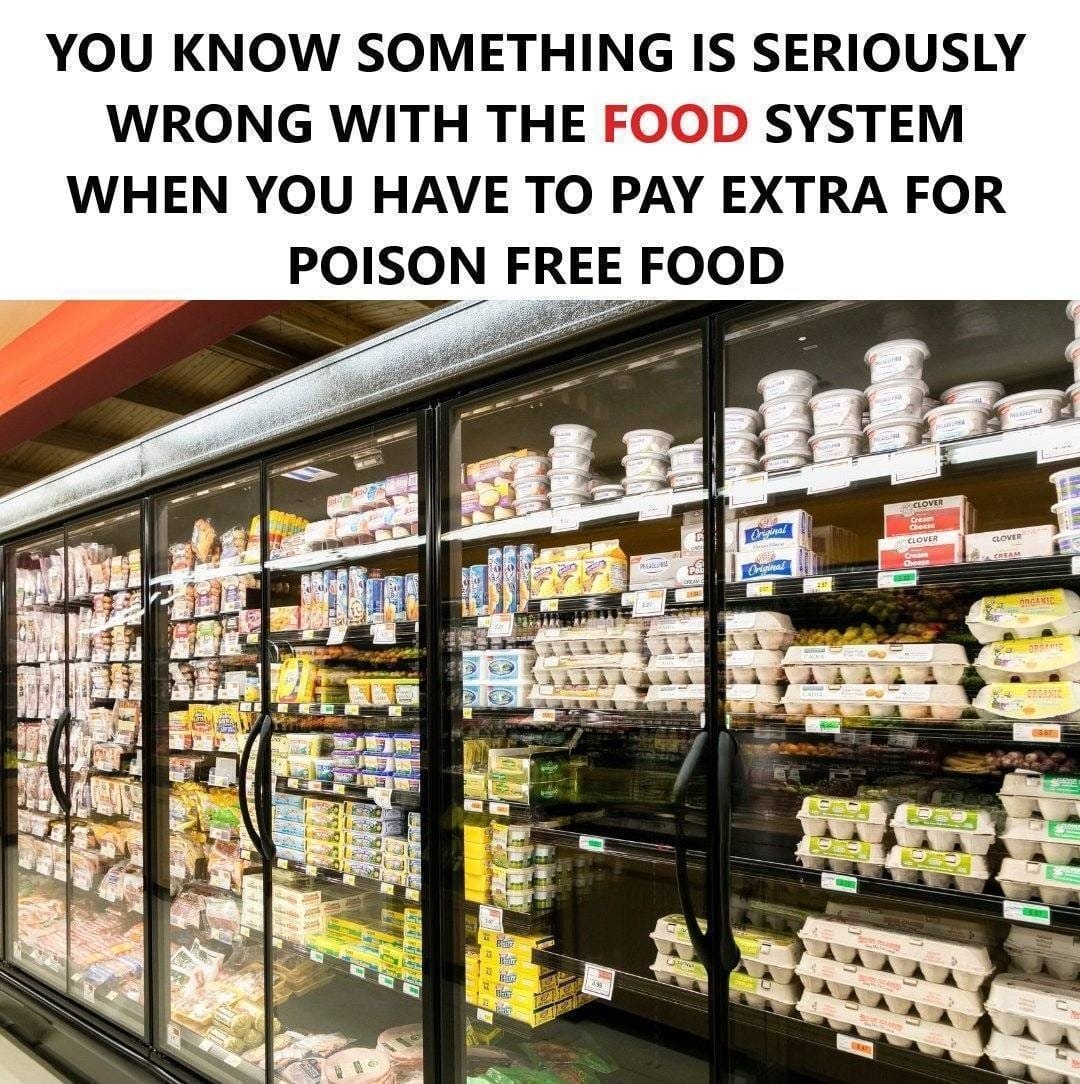ADVERTISEMENT
### **3. The Health and Environmental Implications of a Flawed Food System**
The current state of the food system, where consumers must pay extra for food that is free from harmful chemicals, has significant implications for both human health and the environment.
#### **3.1 The Impact on Human Health**
The widespread use of pesticides, herbicides, and GMOs in conventional farming has raised concerns about the long-term health effects of consuming contaminated food. Studies have linked pesticide exposure to a variety of health problems, including cancer, neurological disorders, and developmental issues in children. While the full extent of the impact remains unclear, the growing body of research suggests that chronic exposure to these chemicals may be contributing to rising rates of diseases such as cancer, autism, and ADHD.
The fact that consumers must pay extra for food that is free from these chemicals highlights a fundamental flaw in the food system. Safe, healthy food should not be a luxury—it should be a basic human right. The current system disproportionately affects low-income individuals and communities, who may not have the financial means to afford organic or pesticide-free options.
#### **3.2 The Environmental Toll**
The industrial food system has also taken a significant toll on the environment. The overuse of synthetic chemicals in farming has led to soil depletion, water contamination, and the destruction of natural habitats. The extensive use of monoculture farming, where large expanses of a single crop are grown, has reduced biodiversity and made crops more vulnerable to pests and disease.
Moreover, the environmental impact of industrial agriculture extends beyond the farm. The transportation and packaging of food contribute to greenhouse gas emissions, while the vast amounts of waste generated by industrial farming practices further harm the environment.
Organic farming, which avoids the use of synthetic chemicals and focuses on soil health and biodiversity, offers a more sustainable alternative. However, the higher cost of organic food reflects the challenges of transitioning to more sustainable farming practices on a large scale.
### **4. Solutions: Moving Towards a Healthier, More Equitable Food System**
While the current food system may seem broken, there are several potential solutions that can help shift the balance and create a healthier, more sustainable food system for everyone.
#### **4.1 Support for Sustainable Farming Practices**
Governments and institutions should provide greater support for sustainable farming practices, such as organic farming, agroecology, and regenerative agriculture. By incentivizing farmers to adopt these practices, we can create a food system that prioritizes health, sustainability, and environmental protection.
#### **4.2 Increased Transparency and Labeling**
Consumers need better access to information about the food they eat. Improved labeling requirements, including clear identification of pesticide residues, GMOs, and other harmful chemicals, can help consumers make informed choices. Additionally, greater transparency around the environmental and social impacts of food production can help shift consumer demand towards more sustainable options.
#### **4.3 Policies to Make Healthy Food More Accessible**
To ensure that everyone has access to healthy, poison-free food, policymakers must address the affordability gap. This could include subsidies for organic and sustainable farming, as well as programs to make organic food more accessible to low-income communities. Furthermore, food assistance programs, such as SNAP (Supplemental Nutrition Assistance Program), should include access to organic food as a viable option.
#### **4.4 Consumer Empowerment and Education**
Finally, consumers play a critical role in shaping the food system. By supporting local, sustainable, and organic producers, consumers can drive demand for safer, healthier food. Additionally, educating the public about the risks of pesticide exposure and the benefits of sustainable agriculture can help create a more informed and conscientious food marketplace.
### **5. Conclusion: A Call for Systemic Change**
The fact that consumers are forced to pay extra for poison-free food is a glaring symptom of a broken food system that prioritizes profits over health and sustainability. We must address this systemic issue by advocating for more transparent labeling, greater support for sustainable farming practices, and policies that make healthy food accessible to all. By shifting the focus from short-term profits to long-term health and environmental sustainability, we can create a food system that works for everyone. Only then will we be able to make safe, healthy food a basic human right, rather than an expensive luxury.
